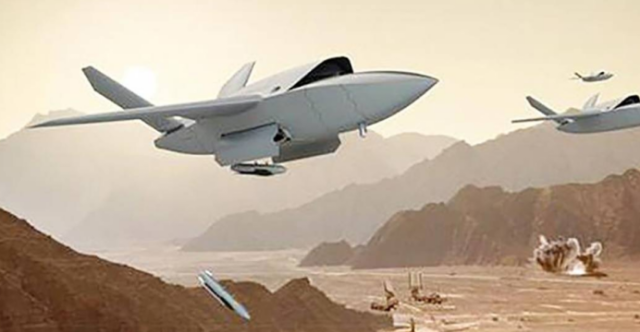A secret unmanned air vehicle from Kratos Defense and Security Solutions is expected to move into production by the end of this business quarter, Kratos’ chief executive said on 8 August.
Kratos first tipped off the existence of the confidential programme earlier this spring, after confirming to FlightGlobal that the company had successfully completed several demonstration flights with the new jet-powered, high-subsonic (UAV).
Kratos has not revealed the identity of the UAV’s government agency customer.
During a presentation at the Jefferies 2017 Investor Conference, Kratos CEO Eric DeMarco told investors revenue from the secret programme will help double the company’s UAV business over the next year.
The UAV is designed for an anti-access area denied environment and its altitude performance ranges up to 45,000ft, DeMarco says. Kratos has not disclosed the aircraft’s g-force tolerance, stealth profile or range, but says the jet can perform sustained-g turns and weaves. Like other Kratos UAVs, the new aircraft is launched on a railed catapult and recovered by deploying a parachute and floating to the ground.
The Kratos Valkyrie was developed from Kratos’ target drone technology. With an airframe length of 9 m, the Valkyrie will have a ferry range of over 4,800 km and payload of 226 kg. Kratos intends to begin flying the Valkyrie by the spring of 2018 .
However, the drone that is to enter production in 2017 is a lighter aircraft, it will have a payload capacity of 136 kg. It appears that this drone is meant for deployment in contested environments.
In addition to its secret UAV programme, Kratos is banking on several other low-cost UAV gambits. Locked in Kratos’ crosshairs is the US Air Force’s Low-Cost, Attritable Strike Unmanned Air System Demonstration (LCASD), which focuses on designing a faster, more survivable UAV for an airspace congested by advanced surface-to-air missiles and peer adversary aircraft. LCASD also falls under the Air Force Research Laboratory’s Loyal Wingman programme, which aims to increase a manned fighter’s capabilities by teaming it with an autonomous jet, DeMarco says. Kratos expects to demonstrate its LCASD UAV by late next year.
Kratos is also eyeing the downselect for the Defense Advanced Research Projects Agency’s Gremlins programme, which is set for late this year. Unlike the ground-launched LCASD programme, the Gremlins concepts envisions the ability to launch and recover UAVs from an airborne platform.
Kratos is participating in the Gremlins programme as a subcontractor to Alabama-based Dynetics.
Source: FlightGlobal

